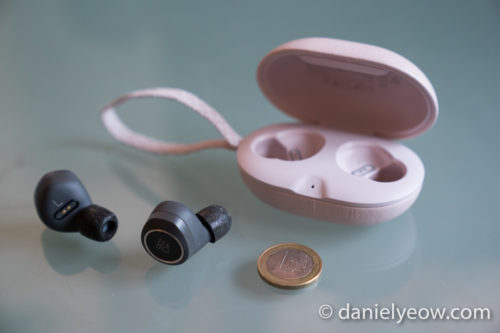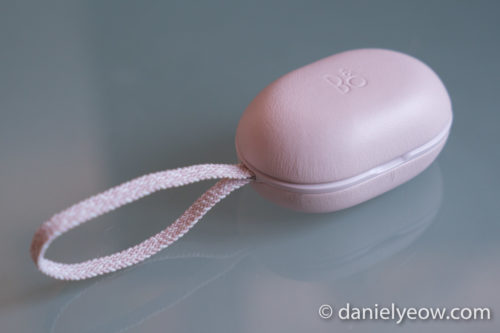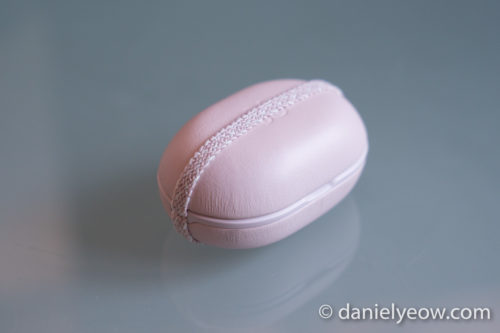B&O Beoplay E8
Good
- good sound
- hides in ears better than AirPods
- good battery life
Bad
- expensive
- bluetooth dropout and interference
- may not fit all ear shapes
Long time readers of danielyeow.com probably know that I own a set of Sennheiser MM 450 bluetooth noise-cancelling headphones. I still do. They still work really well. But…
They fit over my ears and, crucially they have lights; in particular a blue light that flashes every few seconds to indicate that the bluetooth connection is working. This may sound like a small thing, but every night I put my son to bed and lie there with him for 30-40 minutes while he settles into deep sleep (babies will often wake up a few minutes after initially falling asleep to make sure everything is ok before really falling asleep). During this time there can be no light in the room, and herein lies the problem with my Sennheisers.
Quite by chance, I managed to become a father at around the same time that wireless in-ear headphones made the jump to being useably mainstream thanks to the Bragi Dash and Apple AirPods. My original intention was to get custom-fitted headphones with a wire, but the fact that Apple iPhones no longer come with headphone jacks put an end to that idea. I was looking at snugs for custom-made fittings for wireless headphones and through their list of compatible headphones (which was very short at the time) and learned that Danish company Bang and Olufsen make wireless in-ear headphones. I have long owned a set of B&O A8 (wired) headphones (I still do) and have been a fan of the Danish company for quite some time.
The specs of the Beoplay E8 are very similar to the AirPods, but with their in-ear design, they were in that aspect more similar to the Bragi Dash headphones. In considering which headphones to go for, there were two main use-cases which I was aiming for – (1) the dark and quiet bedroom while a baby is falling asleep and (2) sports – specifically skating, cycling, and running. My Sennheisers were ill-suited to sports because, being a standard over-the-ear design, they were not wearable when I was wearing a helmet. In addition, the continuous jolting impacts of running, as well as the sweat, made them impractical, and the fact that my phone no longer has a headphone jack meant that my wired headphones were of no use.
The reason I chose the E8 over the AirPods was because the airpods didn’t fit my ears very well, and I was worried that they would fall out when I was running or skating (the AirPods Pro had not been released at this stage), and the reason I chose them over the Bragis was because, not only were the Bragis more expensive, but they included a lot of extra features – features which I didn’t think that I would ever use. (There were a small handful of other options at the time, but they were all either too large, didn’t fit my ears, or had poor battery life).
The reason I have a pink case is because the original case went missing when my skating bag was stolen while I was skating around Tempelhof airport. The pink colour was the only one that was in stock at the time. As with the airpods, the case is also a battery which can charge the headphones (and indeed is the only way that the headphones can be charged). The case itself is charged by a regular USB-b cable and contains about 3 full charges. The headphones themselves claim 4 hours of battery life, but I’ve never hit that limit – the most I’ve ever needed from the batteries is 2 hours for a long easy ride, run, or skate, including travel time to the venue in the case of skating.
The headphones themselves come with several differently-sized silicone earpieces which the headphones themselves slot into. They also come with an earpiece made of a material which is a lot like foam ear plugs, and this is my earpiece of choice. I give these a quick squeeze, put them in my ears, and the headphones fit themselves snugly and also block out outside noises in much the same way that ear plugs do. These headphones have no ‘active’ noise cancellation but, by their design, their ‘passive’ noise blocking is very effective – I will often put them in my ears during a flight even when they are turned off. They stay in my ears very well, and the sound is good. As with many modern bluetooth headphones tapping the earpieces in certain combinations allows you to skip back, skip forward, start/stop, and turn on/off the device. You can also ask Siri (if it is activated on your phone – I always have it off), there’s a feature to “talk through” which is a fancy way of saying that it uses the microphone to pipe outside noises straight through, for example, when someone is trying to talk to you and you actually want to hear what they have to say. Being a bluetooth headset that connects to a smartphone, you can also take calls (although I very rarely use my phone as a phone these days).
In a perfect world, I would still be using my Seinnheisers, but circumstances have forced me to find a solution for a subtly different set of problems. That being said, these are a great product – they do what it says on the box, and they do it very well. The sound quality is very good, and there’s only the occasional dropout. Of more concern is bluetooth interference – I sometimes have to rearrange where all my sporting devices (which transmit to my watch) are, and where my phone (which is where the right headphone transmits to) is in order to minimise interference. The ability of the case to function as a charger-battery is a real advantage that these have over the Sennheisers, although I would rate the Sennheisers slightly better on audio quality. When all the batteries run out, the Sennheisers can be plugged in (to devices with a headphone jack) while the Beoplay E8 just become very expensive earplugs. I would recommend these headphones to anybody, but whether you go for these kinds of in-ear bluetooth earphones, or a larger set of over-the-ear headphones, like the Sennheisers or the even larger Bose QC35 depends largely on your needs and constraints.




Leave a comment